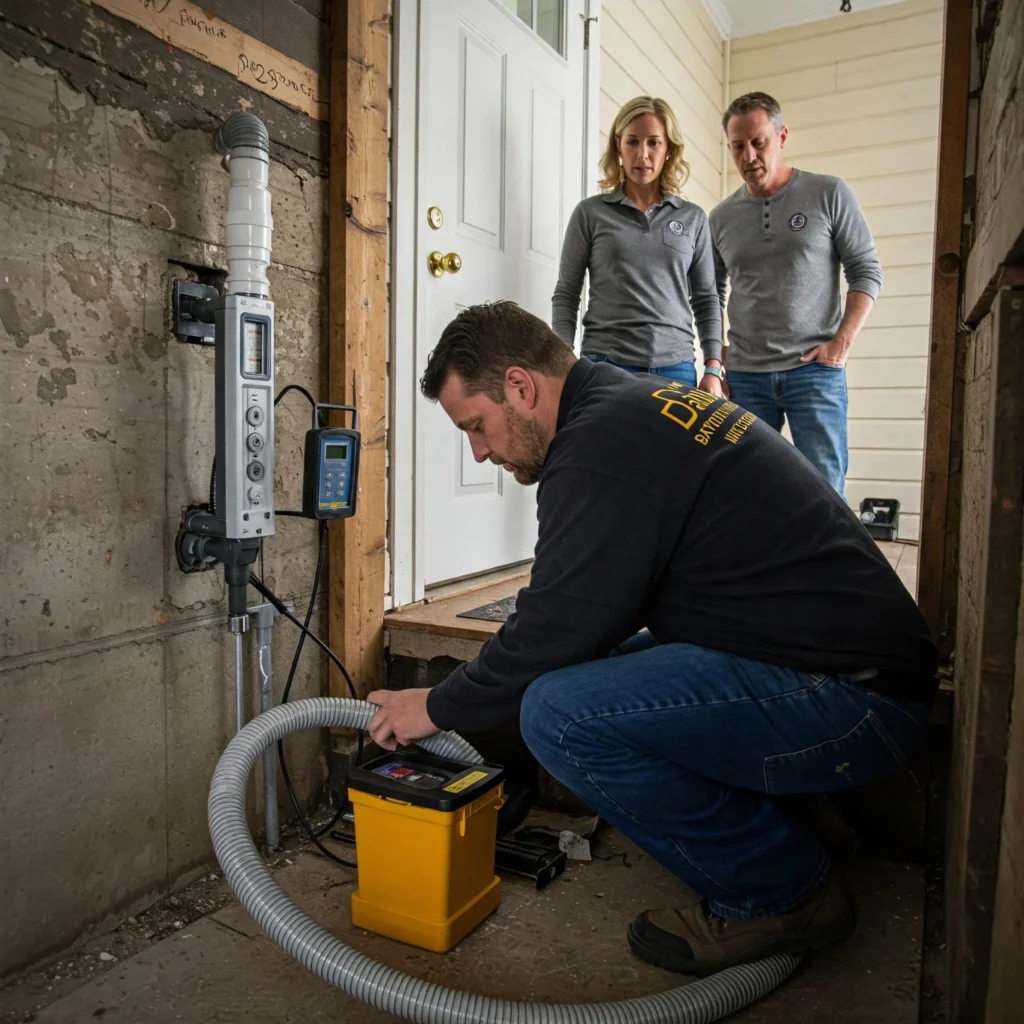Do you know about that unseen danger in your house? The threat of radon gas is silent, odorless, radioactive, and will in all likelihood cause you serious health problems, including lung cancer. According to the EPA, radon is the second most prevalent cause of lung cancer in America. Most of the time, people are unaware of how dangerously radon continuously seeps into their homes, since it can only be detected through proper testing.
Table of Contents
ToggleYou might like: Protect Your Foundation: Must-Know Tips for Surviving Texas Storms
Basically, how does this guide help you understand what radon gas is, how it infiltrates your house, and most importantly, some of the effective radon tests and mitigation techniques used to ensure safety for you and your family?
What is Radon Gas and Why Should You Care?
Radon is a naturally occurring radioactive gas produced from the decay of uranium in soil, rock, or water. It makes its way into the house through cracks in the foundation, gaps in floors, and even in well water. Because radon is colorless and odorless, the only way to ascertain whether your home has high levels of this dangerous gas is by testing.
Exposure to elevated levels of radon presents a risk of lung cancer and, as such, is a serious health concern. Chronic exposure is particularly hazardous for smokers and persons who have certain other respiratory faults.
How Does Radon Enter Your Home?
Radon can infiltrate homes through various entry points, including:
Cracks in walls, floors, and foundations
Construction joints
Gaps around pipes and electrical wiring
Well water and underground sources
Since radon levels vary based on geographic location, construction type, and ventilation, every homeowner should conduct regular radon testing.
Health Risks Associated with Radon Exposure
The primary health risk of radon exposure is lung cancer. When radon gas is inhaled, its radioactive particles can become trapped in lung tissue, emitting harmful radiation that damages cells over time.
Key Statistics:
The EPA estimates that radon exposure causes approximately 21,000 lung cancer deaths annually in the U.S.
Smokers exposed to radon face a significantly higher risk of lung cancer due to the combined effects of tobacco smoke and radon gas.
Children and older adults may be more susceptible to the effects of radon due to their developing or weakened respiratory systems.
Since radon poisoning has no immediate symptoms, many people are unaware of the danger until a serious illness develops.
How to Test Your Home for Radon
Testing your home for radon is simple, affordable, and essential for indoor air safety. Here are two common testing options:
Short-Term Radon Test Kits – These tests measure radon levels over a few days and provide quick results.
Long-Term Radon Test Kits – These tests monitor radon levels for several months, giving a more accurate representation of year-round exposure.
Radon test kits are widely available online, at home improvement stores, or through local health departments. For the most reliable results, homeowners can hire certified radon testing professionals.
DIY Radon Testing and Mitigation Options
If you prefer a hands-on approach, consider these DIY radon testing and mitigation strategies:
DIY Radon Testing
Purchase an EPA-approved radon test kit from a hardware store or online retailer.
Place the test kit in the lowest level of your home, such as a basement or crawlspace, for the recommended duration.
Mail the test kit to a certified laboratory for professional analysis.
DIY Radon Mitigation
If radon levels in your home exceed 4 pCi/L (picocuries per liter), consider taking action with these methods:
Increase Ventilation – Open windows and use fans to improve airflow and reduce radon concentration.
Seal Cracks and Gaps – Apply caulk or foam sealant to close entry points where radon can seep in.
Install a DIY Radon Reduction System – A vent pipe and fan system can help direct radon away from your home.
Use an Air Purifier with an Activated Carbon Filter – While not a complete solution, air purifiers can help reduce radon levels indoors.
For homes with consistently high radon levels, professional mitigation may be necessary.
Professional Radon Testing and Mitigation Services
If DIY methods are not enough or you want guaranteed results, hiring a professional radon mitigation service is the best option. Here’s what professional services offer:
Professional Radon Testing
Certified inspectors use advanced radon detection equipment for accurate readings.
Continuous radon monitoring devices provide detailed long-term exposure reports.
Experts help determine the best placement for test kits and interpret results effectively.
Professional Radon Mitigation
Sub-Slab Depressurization – A ventilation system directs radon gas away from the home before it enters living spaces.
Soil Suction Systems – Reduces radon levels by extracting gas from beneath the foundation.
Sealing Entry Points – Specialists use high-quality materials to seal cracks and gaps effectively.
Crawl Space Ventilation – Improves airflow to prevent radon buildup in confined areas.
Professional radon mitigation services provide long-term protection, and many companies offer warranties on their work, ensuring peace of mind for homeowners.
Radon-Resistant Construction Techniques
For those building new homes or remodeling, incorporating radon-resistant construction techniques can prevent radon exposure before it becomes a problem. These techniques include:
Gas-Permeable Layer – Gravel beneath the foundation allows radon gas to move freely and escape safely.
Plastic Sheeting – A vapor barrier prevents radon from entering the home through the foundation.
Sealing and Caulking – Closing all cracks and openings reduces radon entry points.
Vent Pipe System – A dedicated vent pipe routes radon gas from beneath the home to the outdoors.
Radon Ventilation Fan – A continuous exhaust system removes radon from the foundation area before it accumulates inside the home.
Radon-resistant construction is a proactive approach to ensuring a healthier home environment.
Frequently Asked Questions (FAQ)
Q: How can I tell if my home has high radon levels?
A: The only way to detect radon is through proper testing. Use a home test kit or hire a professional radon inspector.
Q: Is radon a problem in certain areas only?
A: While some regions have higher radon concentrations, radon can be found in any home, regardless of location.
Q: Can I fix high radon levels on my own?
A: DIY mitigation methods can help reduce radon, but for higher levels, professional mitigation is recommended.
Q: How often should I test my home for radon?
A: Experts recommend testing every two years or after significant home renovations.
Protect Your Home and Family from Radon Today
Radon gas is a silent but serious health hazard that requires awareness and action. Regular testing and mitigation can significantly reduce exposure risks and ensure a safe living environment.
Don’t wait, test your home for radon today! Contact R.L. NELSON Foundation Solutions at 281-420-1739 for expert radon testing and mitigation services. Take control of your indoor air quality and protect your family from this hidden danger now!






